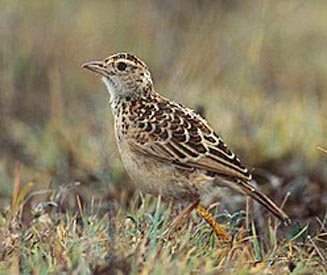Africa’s first bird extinction likely within four years
 London, March 21 : A new study has warned that Africa might soon see its first bird extinction in about four years time.
London, March 21 : A new study has warned that Africa might soon see its first bird extinction in about four years time.
According to a report in New Scientist, the bird in question is the Sidamo lark, which may become the first contemporary African bird to go extinct.
The lark is adapted to Ethiopia's "rangeland" - the savannah of native grasses that traditionally covered large parts of east Africa, but is now rapidly disappearing.
"If the rangeland goes, so will the lark," said Claire Spottiswoode from the University of Cambridge.
"Rangeland degradation is often overlooked by conservationists, but it is not just the birds that suffer from the change in land use. The native people, the Borana pastoralists, also rely on intact rangeland to support their nomadic lifestyle," she added.
Spottiswoode and her team became interested in the Sidamo lark after a BirdLife International report estimated that only 1600 to 2000 individuals of this little known bird were left on Ethiopia's Liben plain, occupying an area of 760 km square.
However, once the team began to map the vegetation and count larks along transects, they quickly discovered that the population is actually much smaller.
Changes to traditional ways of life mean that much of the rangeland has disappeared.
In areas where the Liben plain has been overgrown by bush, converted into farmland or destroyed by overgrazing, the team rarely found Sidamo larks.
They conclude that the range of the bird is now down to only 35 km sqaure and that the remaining patch hosts 250 adult larks at best.
The Sidamo lark seems to be dependant on grassland 5 to 15 centimeters tall. Away from the Liben plain, there is no similar vegetation for over 200 km, meaning the lark has nowhere else to go.
"It's effectively like living on an island, and that's where most extinctions happen," said Spottiswoode.
"If the situation does not improve rapidly, this species will be gone in four years or even sooner," said Spottiswoode, who is calling for the bird's status to be moved to critically endangered on the IUCN Red List. (ANI)